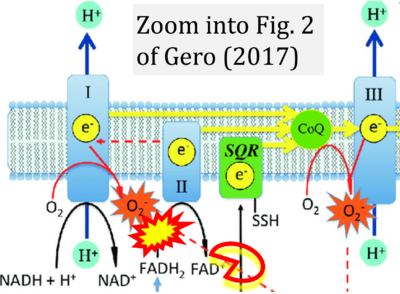Gero 2017 IntechOpen: Difference between revisions
m (Gnaiger Erich moved page Gero 2023 IntechOpen to Gero 2018 IntechOpen) |
m (Gnaiger Erich moved page Gero 2018 IntechOpen to Gero 2017 IntechOpen) |
||
| (4 intermediate revisions by the same user not shown) | |||
| Line 1: | Line 1: | ||
{{Publication | {{Publication | ||
|title=Gero D ( | |title=Gero D (2017) Hyperglycemia-induced endothelial dysfunction. IntechOpen Chapter 8. http://dx.doi.org/10.5772/intechopen.71433 | ||
|info=[ | |info=[https://www.intechopen.com/chapters/57915 Open Access] | ||
|authors=Gero D | |authors=Gero D | ||
|year= | |year=2017 | ||
|journal=IntechOpen | |journal=IntechOpen | ||
|abstract=Glucose-induced endothelial dysfunction plays a fundamental role in the development | |abstract=Glucose-induced endothelial dysfunction plays a fundamental role in the development of diabetic vascular complications and glycemic control (the foundation of diabetes care) provides limited protection against the cardiovascular complications. Therefore, identification of novel drug targets and treatment approaches for diabetes complications represent a key direction of current pharmaceutical research. The “unifying theory” of hyperglycemia-induced endothelial cell injury organizes the events of cellular dysfunction in a linear cascade and identifies mitochondrial superoxide generation as the triggering event of the injury. Exposure to high glucose concentration for long periods or repeated glycemic swings may induce changes in metabolic substrate availability and lead to mitochondrial hyperpolarization. Changes in the mitochondrial membrane potential induce superoxide production by the electron transport chain and result in oxidative stress. Mitochondrial superoxide is also responsible for the induction of other sources of reactive oxygen species (ROS) within the cells, including advanced glycation end products (AGEs) and the NADPH oxidase. Mitochondria also show morphological changes and impaired assembly of the respiratory complexes occurs, which results in cellular energy failure, cell senescence and vascular dysfunction. Current intervention strategies aim to inhibit the mitochondrial ROS production and novel therapeutic approaches are expected to provide valuable tools in diabetes therapy in the upcoming years. | ||
of diabetic vascular complications and glycemic control (the foundation of diabetes care) | |||
provides limited protection against the cardiovascular complications. Therefore, | |||
represent a key direction of current pharmaceutical research. The “unifying theory” of | |||
hyperglycemia-induced endothelial cell injury organizes the events of cellular | |||
repeated glycemic swings may induce changes in metabolic substrate availability and | |||
lead to mitochondrial hyperpolarization. Changes in the mitochondrial membrane | |||
stress. Mitochondrial superoxide is also responsible for the induction of other sources of | |||
reactive oxygen species (ROS) within the cells, including advanced glycation end | |||
and impaired assembly of the respiratory complexes occurs, which results in cellular | |||
energy failure, cell senescence and vascular dysfunction. Current intervention strategies | |||
aim to inhibit the mitochondrial ROS production and novel therapeutic approaches are | |||
expected to provide valuable tools in diabetes therapy in the upcoming years. | |||
|editor=Gnaiger E | |editor=Gnaiger E | ||
}} | }} | ||
[[File:Gero 2018 IntechOpen CORRECTION.png|right|400px]] | |||
{{Template:Correction FADH2 and S-pathway}} | |||
{{Labeling | {{Labeling | ||
|enzymes=Complex II;succinate dehydrogenase | |enzymes=Complex II;succinate dehydrogenase | ||
}} | }} | ||
Latest revision as of 11:38, 4 December 2023
| Gero D (2017) Hyperglycemia-induced endothelial dysfunction. IntechOpen Chapter 8. http://dx.doi.org/10.5772/intechopen.71433 |
Gero D (2017) IntechOpen
Abstract: Glucose-induced endothelial dysfunction plays a fundamental role in the development of diabetic vascular complications and glycemic control (the foundation of diabetes care) provides limited protection against the cardiovascular complications. Therefore, identification of novel drug targets and treatment approaches for diabetes complications represent a key direction of current pharmaceutical research. The “unifying theory” of hyperglycemia-induced endothelial cell injury organizes the events of cellular dysfunction in a linear cascade and identifies mitochondrial superoxide generation as the triggering event of the injury. Exposure to high glucose concentration for long periods or repeated glycemic swings may induce changes in metabolic substrate availability and lead to mitochondrial hyperpolarization. Changes in the mitochondrial membrane potential induce superoxide production by the electron transport chain and result in oxidative stress. Mitochondrial superoxide is also responsible for the induction of other sources of reactive oxygen species (ROS) within the cells, including advanced glycation end products (AGEs) and the NADPH oxidase. Mitochondria also show morphological changes and impaired assembly of the respiratory complexes occurs, which results in cellular energy failure, cell senescence and vascular dysfunction. Current intervention strategies aim to inhibit the mitochondrial ROS production and novel therapeutic approaches are expected to provide valuable tools in diabetes therapy in the upcoming years.
• Bioblast editor: Gnaiger E
Correction: FADH2 and Complex II
- FADH2 is shown as the substrate feeding electrons into Complex II (CII). This is wrong and requires correction - for details see Gnaiger (2024).
- Gnaiger E (2024) Complex II ambiguities ― FADH2 in the electron transfer system. J Biol Chem 300:105470. https://doi.org/10.1016/j.jbc.2023.105470 - »Bioblast link«
Labels:
Enzyme: Complex II;succinate dehydrogenase


